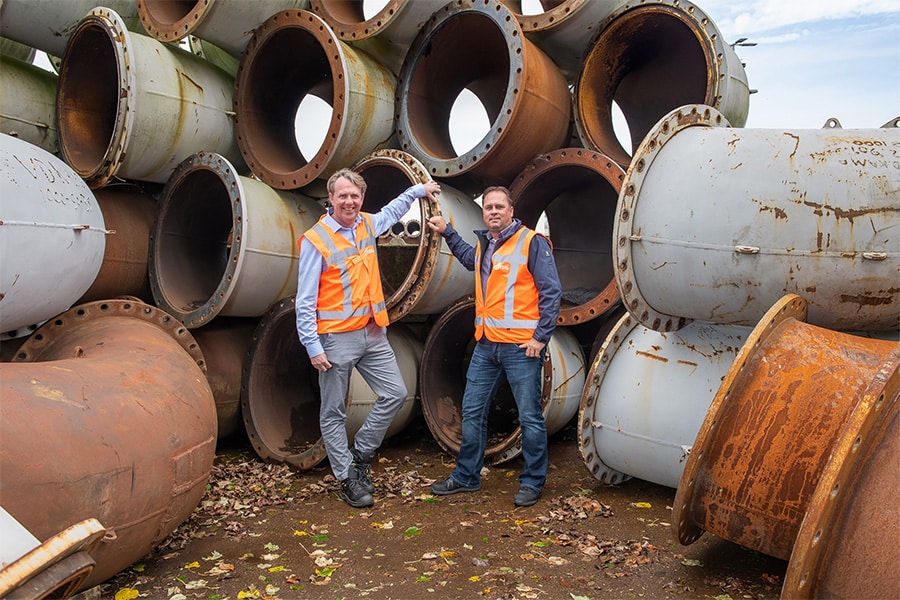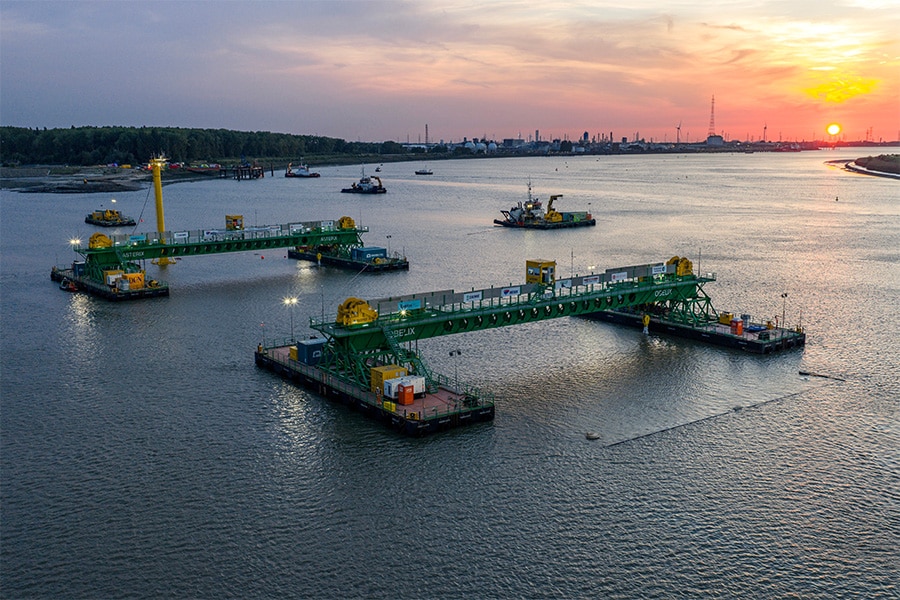
Customized flood defenses on project The Entrance
Four-sided closure keeps metro departure hall dry in case of calamities
In previous issues of this magazine, we reported on project De Entree in Amsterdam, carried out by Max Bögl & Partners. One of the articles mentioned the wall in the tunnel between the bicycle basement and the subway departure hall. In this wall was a temporary door, waiting for the wall to be completely broken open. The latter could only be done when the official flood barrier was ready. A flood barrier to prevent water from the bicycle basement from entering the metro departure hall in case of calamities. Aggéres, a specialist in flood defenses, was commissioned to design and build this dam. We speak with the Oliver and Anthony Femont, owners of Belgium-based Aggéres.

Bulkhead system
Aggéres is no stranger to the Netherlands and has attracted publicity several times with high-profile flood defense solutions in our little country. "It may seem ironic that we from Belgium provide flood defenses in the Netherlands of all places, but our expertise and drive for innovation make us a player to be reckoned with," says Oliver. "Max Bögl had approached us to help think about a flood barrier in the metro link tunnel at De Entree. The challenge was that this had to be a barrier on four sides. That's fairly unusual and more hermetic than what people are used to with flood defenses." Anthony explains, "It also makes sense that the closure should be left, right, bottom and top, the bike basement, tunnel and subway departure hall are well below the height to be turned over in case of emergencies."
Aggéres' bulkhead beam system, made of aluminum, was chosen. "The total area of the seal was 6 meters wide by a height of 4 meters. Together with Max Bögl and several engineering firms, we did calculations on the construction, finally arriving at an approved design. The bulkhead beams were made of profiled aluminum, an extrusion profile. Within this execution class, we are currently one of the few companies that can handle that," Oliver said. The challenge was mainly in the welding of the components. "That in itself is very specialized work," Anthony outlines. "The cooperation with the client and the engineering and research firms is very intensive. We then also pull the Dutch regulations into Belgium, in connection with the extensive failure probability calculations and risk analyses."
The operation
The aluminum water barrier slats will soon be ready on transport carts in a technical area in the metro departure hall. The people in charge from the technical department of the City of Amsterdam are authorized to place the slats in case of (imminent) calamities. "At the top is a concrete mirror piece in the tunnel," Oliver explains. "That is where the top lamella is placed watertight against it. This creates the watertight seal all around." Anthony adds, "Of course, the people who have to work with this system will be trained when everything is ready."
Even though the wall is still being worked on, this is only finishing work. In fact, the water barrier is already fully operational. Oliver: "As I said, the dam had to be finished in time, because the concrete wall with emergency door was going to disappear and everything had to be safe after that."
In-house testing facilities
The bulkhead beams are a piece of proven technology for Aggéres. Only in terms of dimensions, this situation is new. For Aggéres, a reason to test properly and that can be done, completely in-house. "We have our own test lab, a basin 4 meters deep and a circumference of 5 x 12 meters," Oliver said. "Nothing beats live testing. You'll be amazed at computer calculations that declare something safe, but where field testing shows otherwise. People's lives depend on our solutions, so count on us to leave nothing to chance."
In conclusion, Anthony says, "The test basin allows us to make improvements in the designs, a boost to our innovative power. We solve problems with non-standard solutions."






